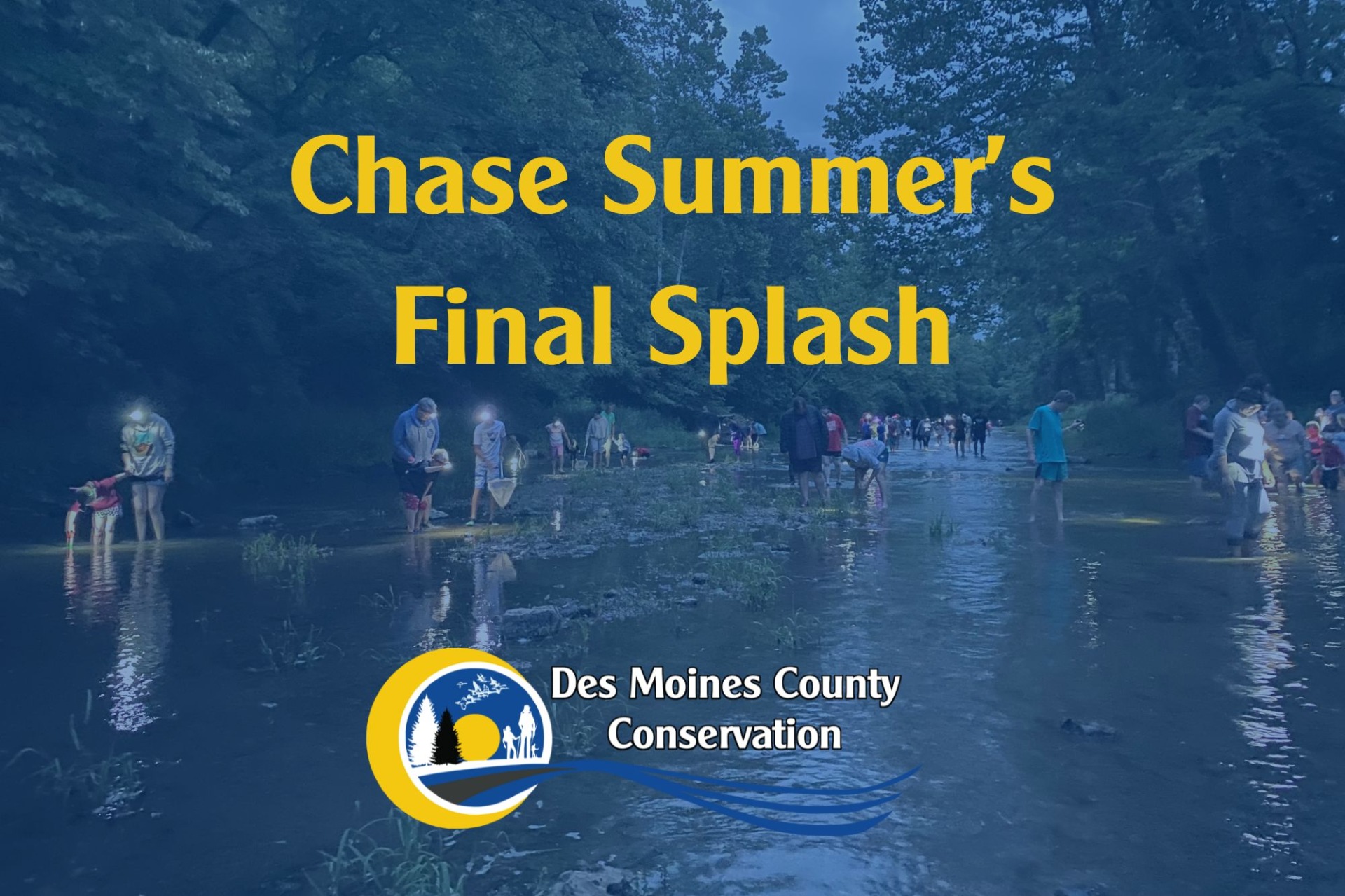
Chase Summer’s Final Splash
Looking for a fun adventure to end summer? Let me introduce you to one of our favorite outdoor adventures: creek stomping!Jacklyn Wolken, Conservation Technician
Just like it sounds, creek stomping is all about wading into a shallow stream to discover wildlife and enjoy the sights and sounds of the natural world all while getting your feet wet. It’s simple, it’s hands-on, and it’s one of our favorite summer activities at Des Moines County Conservation.
Night Creek Stomp
For the past two years, we have taken creek stomping to a whole new level with our Night Creek Stomp program. As the sun sets and the stars come out, the creek transforms. Picture frogs calling in the distance, fireflies twinkling above, and the sound of splashing water under a moonlit sky. It is an unforgettable way to experience nature after dark.
Join us on August 13th from 8:30 to 10:00 PM at Starr’s Cave Park and Preserve for this year's Night Creek Stomp. We will provide a limited supply of headlamps and nets and go over safety tips before we head into the water. Just bring clothes and shoes you don’t mind getting wet, and if you have your own headlamp or net, feel free to bring those too!
DIY Creek Stomping
Can’t make it to the event? No problem! Starr’s Cave Park and Preserve is open daily from 6:00 AM to 10:30 PM and the creek is a popular spot to cool off and explore. Whether you are flying solo or bringing the whole family, creek stomping is a great way to connect with nature at your own pace.
Tips for a successful stomp:
- Carefully flip over rocks to look for hidden critters, then place them back just as you found them to keep their homes safe.
- Try holding a net downstream while shuffling your feet. This stirs up bottom-dwelling creatures that often float right into your net!
- Remember that Starr’s Cave is a preserve so everything must be left as you found it, and anything brought in must be packed out.
- Snap a photo of anything you can’t identify and bring it to the nature center for help with identification.
- Bring a towel or a change of clothes for the ride home. Trust us, you’ll be glad you did.
What Will You Find?
When we explore Flint Creek, we come prepared with nets and ID sheets to help us identify the animals we see. Some common finds include frogs, minnows, water snakes, turtles, and even the occasional river otter! But the real stars of the creek are often much smaller.
We often find benthic macroinvertebrates, which are animals that are typically found at the bottom of waterways, lack backbones, and are large enough to see without a microscope. Some common examples of benthic macroinvertebrates found in Flint Creek include may fly larvae, caddisfly larvae, dobsonfly larvae, crawdads, dragonfly larvae, backswimmers, midge fly larvae, and pouch snails.
Why do these little critters matter? They help us understand the health of the water. Many of them are bioindicators, which are species that reflect water quality based on their presence or absence. If we only find species that can survive in polluted conditions, it can be a sign that the water is unhealthy. When we discover a diverse mix of both pollution-tolerant and pollution-sensitive species, it usually points to cleaner water and a more balanced, thriving ecosystem. The more diverse life we see, the healthier the ecosystem tends to be! At Flint Creek, we find a mixture of tolerant and sensitive species, suggesting a healthy ecosystem.
With a better idea of what lives beneath the surface, take some time to explore before summer fades away. Roll up your pants, grab your friends, and head to Flint Creek to close out summer!
published Monday, August 11, 2025

